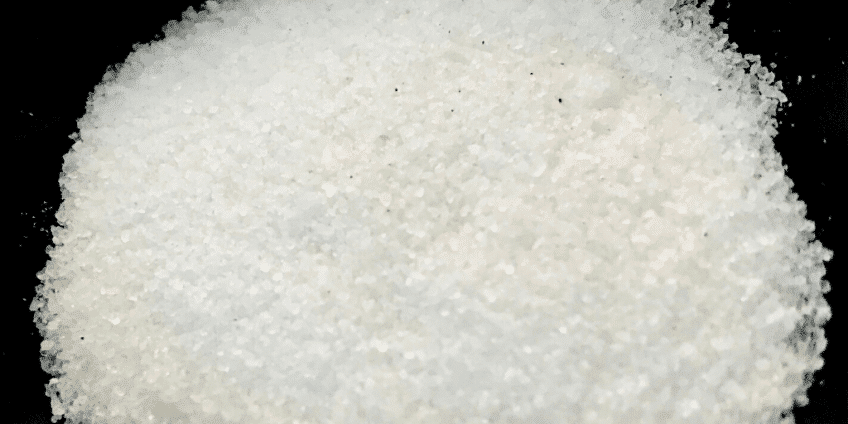Scroll to Recipes with Salt / नमक as ingredient
Salt is a common yet extremely essential ingredient in cooking. Chemically salt is known as Sodium Chloride (NaCl).
Even though the most common use of salt is in cooking, but it is a fact that only 5%-6% of salt is for human consumption. The majority of applications of salt contribute to industries. Moreover, other uses include water conditioning processes, de-icing highways, and agricultural use.
Commonly known in India as
Here is a table for the common names salt is known by.
| Language | Name | Written as |
|---|---|---|
| Bengali | Labaṇa | লবণ |
| Gujarati | Mīṭhuṁ | મીઠું |
| Hindi | Namak | नमक |
| Kannada | Uppu | ಉಪ್ಪು |
| Malayalam | upp | ഉപ്പ് |
| Marathi | Mīṭha | मीठ |
| Tamil | Uppu | உப்பு |
| Telugu | Uppu | ఉ ప్పు |
| Urdu | namak | نمک |
| Punjabi | Lūṇa | ਲੂਣ |
| Sanskrit | Lavaṇa | लवण |
| English | Salt | |
| Arabic | milh | ملح |
Types of Salt
There are many types of salt. But five common types we use are mention here.
- Iodised Salt/Refined Salt/Table Salt – Iodised salt is the most known common salt. The salt is refined and grounded to take away it’s impurities, but also it’s trace minerals. Iodine is often added to this salt.
- Kosher salt – It is a traditional Jewish salt. It helps extract the blood from the meat because of its coarse grains before it is cooked. It is customary in Jewish tradition. Therefore it is popular in their cuisine.
- Himalayan Salt – Gray and has moisture in it. Celtic salt is lower in sodium than plain table salt and contains a trace amount of minerals.
- Pink Salt – Pink salt is found in the Punjab region of Pakistan, near the foothills of the Himalayas. It is a sea salt that is the healthiest salt available — containing up to 98 percent sodium chloride. Other minerals include potassium, magnesium, and calcium. They give the salt its light pink tint.
- Low sodium salt – The main ingredient in this type of salt is potassium. Regular salts have an abundant amount of sodium, and hence, salt-containing low sodium is helpful for those with blood pressure problems.
Nutritional Profile of Salt
Nutritional profile per 100 gms
- Sodium: 38.75g
Source: USDA & Google
Minerals Present in Salt
Salt is about 40% sodium and 60% chloride. Minerals like calcium, copper, iron, iodine, potassium, and a bit of zinc are present in common salt. Studies debate that Pink Himalayan Salt is the richest in minerals containing up to 84 minerals.
- Sodium – Sodium present in salt helps in the smooth functioning of nerves and muscles and helps to strike the balance of fluids in the body.
- Chloride – One of the most important of these electrically charged minerals is chloride. Chloride works with other electrolytes, likely with sodium and potassium, to help balance acids and bases in your body. It also helps with the movement of fluid in and out of your cells.
- Calcium – 1% of the body calcium is used for muscle function, nerve transmission, intracellular signaling, and hormonal secretion. Rest 99% of the body’s calcium supply is stored in the bones and teeth where it supports their structure and function.
- Copper – It helps maintain a healthy metabolism, promotes strong and healthy bones, and ensures your nervous system works properly. Deficiency od copper may cause fatigue, weak bones, problems with learning, pale skin, etc.
- Iron – Iron is a mineral essential for hemoglobin. It also has a role in a variety of other vital processes in the body, like metabolism.
- Iodine – The primary role of iodine in our body is in the use of making thyroid hormones by the thyroid gland. Iodine deficiency may include symptoms like weakness, unexpected weight gain, changes in heart rate, etc.
- Potassium – Potassium is an electrolyte essential for the nerves and muscle cell functioning, especially for muscle cells in the heart. Signs of potassium deficiency include extreme fatigue, muscle spasms, weakness, or cramping, irregular heartbeat, constipation, nausea, or vomiting.
Benefits of Salt
Many organizations warn us of the dangers of too much consumption of salt. But many risks can occur if the amount of salt is too little in our system. So when we consume salt in the required proportion, we can have many benefits out of it.
Helps Thyroid Function
The thyroid plays a vital role in metabolism, and for that, it needs mineral iodine. The primary use of iodine is to help the thyroid gland producing thyroid hormones. A deficiency in iodine can prevent the body from producing enough hormones.
Source: ods.od.nih.gov
Keeps the Body Hydrated
The body needs to need water. Salt helps the body maintain the proper amount of fluid for the cells and tissues.
Source: realsalt.com
Prevents Low Blood Pressure
A low amount of sodium in your diet can cause low blood pressure (hypotension). Signs of this include dizziness, nausea, fainting, and blurry vision.
Source: mayoclinic.org
Improves Symptoms of Cystic Fibrosis
Cystic Fibrosis affects the lungs and gastrointestinal system. The body produces thick and sticky mucus, which will clog the lungs and obstruct the pancreas. People with cystic fibrosis (CF) tend to lose large amounts of sodium and chloride while sweating. So people with this problem may need to use more amount of salt in their diet.
Source: health.qld.gov.au
Supports a healthy nervous system
Sodium helps in electrolyzing and regulating water flow in our system. Waterflow is critical for your nervous system, and salt is one of the best sources to obtain sodium.
Source: www.drstevenlin.com
Negative Effects of Salt
Excess amounts of salt in the body can cause side effects.
If you eat an excessive amount of salt, the additional water stored in your body raises the blood pressure. Higher blood pressure can cause strain on your heart, arteries, kidneys, and brain. It can cause heart attacks, strokes, dementia, and kidney disease.
If you are on medication for blood pressure, overeating salt may reduce its effect.
The effect on arteries causes problems with the heart too.
Frequently Asked Questions
What is the healthiest salt to use?
The healthiest form of sea salt is the least refined and with maximum trace minerals. According to studies, Pink Himalayan salt is the healthiest salt available.
Is table salt and sea salt the same?
Table salt is more refined and eliminated from some trace minerals. Besides, Iodine has added to it afterward. Sea salt is the unrefined and unprocessed version of the table salt.
Is pink Himalayan salt iodized?
Pink Himalayan Salt may contain iodine naturally as a mineral. But it still has it in a lesser amount than the table salt.
Can salt make your blood pressure go up?
Salt that we consume contains sodium in high quantities. If it exceeds the amount necessary in our bloodstream, then it may create an imbalance and increase blood pressure.
What happens if we stop eating salt?
Sodium is the main ingredient in salt. The extreme loss of sodium can trigger symptoms starting from muscle cramps, nausea, vomiting, and dizziness to shock.
Source: roswellpark.org
What are the benefits of Pink Himalayan salt?
The key benefit of Pink Himalayan Salt is to balance the pH.(alkaline/acidity) and helps in muscle cramping. Besides, it also helps in metabolism and strengthens the bones.
Source: medicalnewstoday.com
Does pink Himalayan salt help weight loss?
The sole water is water saturated with Pink Himalayan salt. It suggested that it can help you lose weight and balance your hormones.
Source: ncbi.nlm.nih.gov
Which foods are the highest in salt?
Processed foods like baked beans, soups, processed meat like ham and bacon, smoked foods, ready meals, restaurants, and takeaway food, some cereals, and even bread are high on salt.
What’s the difference between sodium and salt?
The words salt and sodium are interchangeable as general usage, but both don’t mean the same. Salt is made of two main minerals that are sodium and chloride. It means sodium is a part of salt.
How much salt should I eat?
The American Heart Association recommends no more than 2,300 milligrams (mg) each day and moving toward an absolute limit of no more than 1,500 mg each day for many adults.
Source: fda.gov

